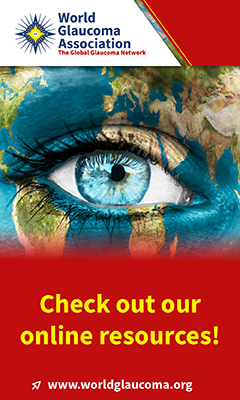advertisement

Top-Five of the annual Belgian Glaucoma Society Session
The National Ophthalmological Congress, Brussels, Belgium, January 16, 2016

Sayeh Pourjavan, Cliniques Universitaires St. Luc, Brussels, Belgium
This session included, lectures given by an invited speaker and the board members and challenging cases in glaucoma treatment and surgery.
- Combined phaco-trabeculectomy versus phacoemulsification alone for angle-closure
glaucoma.
We reviewed RCTs comparing phacoemulsification with combined phaco-trabeculectomy. Compared to phacoemulsification alone, phaco-trabeculectomy offered only a small additional IOP reduction (mean=1.5 mmHg) and additional reduction of the number of glaucoma medications (mean=1). However, phaco-trabeculectomy was associated with significantly more post-operative complications. Phacoemulsification alone is probably the best first option in patients with medically controlled and uncontrolled angle-closure glaucoma. RCTs are needed to compare phacoemulsification alone with combined phaco-MIGS (minimally invasive glaucoma surgery). (Prof. Thierry Zeyen, Leuven, Belgium (President of BGS) - Translaminar pressure gradient. Is it relevant for NTG? And- is it accurate?
Translaminar pressure (TLP) has recently gained interest in the study of normal tension glaucoma. Applying physics however reveals major flaws in this concept. In fact neither the force nor the area under the force is known for a calculation of TLP. The concept needs to be improved. A recent study on 37 Caucasians did not confirm a connection of TLP to glaucomatous field defects. (Prof. Hanspeter E Killer, Aarau, Switzerland) - Preservative free drops: treatment or prevention of ocular surface disease (OSD)?
In two studies we demonstrated that BAK induces low grade chronic inflammation not only on the ocular surface but also in the anterior chamber of the eye. Recent findings implicate Thelper 17 memory cells in the vicious cycle of inflammation and OSD. Therefore, preservative free medication should be used from the start in our glaucoma patients, as prevention is better than treatment. (Dr. Annemie Stevens, Ghent, Belgium) - New glaucoma drugs and devices in the pipeline.
The future looks bright for the treatment of glaucoma. There are many promising drugs in clinical trials, such as ROCK-inhibitors, endothelin antagonists, adenosine agonists, cannabinoids, latrunculins, angiotensin blockers, and possibly even neuroprotective agents. We also discussed new mechanisms of drug delivery, such as Helios insert, drug-eluding punctal plugs, Durasert and other injectables. (Dr. Kathy Hodeghem, Antwerp, Belgium) - Can elderly patients with early glaucoma be followed initially without treatment?
According to the Guidelines of the European Glaucoma Society, the goal of glaucoma treatment is to maintain the patient’s visual function and related quality of life, at a sustainable cost. Therefore, when considering treatment in a glaucoma patient, the benefit and risks of treatment should be weighed against the risk of significant visual loss during the patient’s life span. In some elderly patients with early glaucoma, an initial follow-up without treatment may be warranted. (Prof. Ingeborg Stalmans, Leuven, Belgium)

